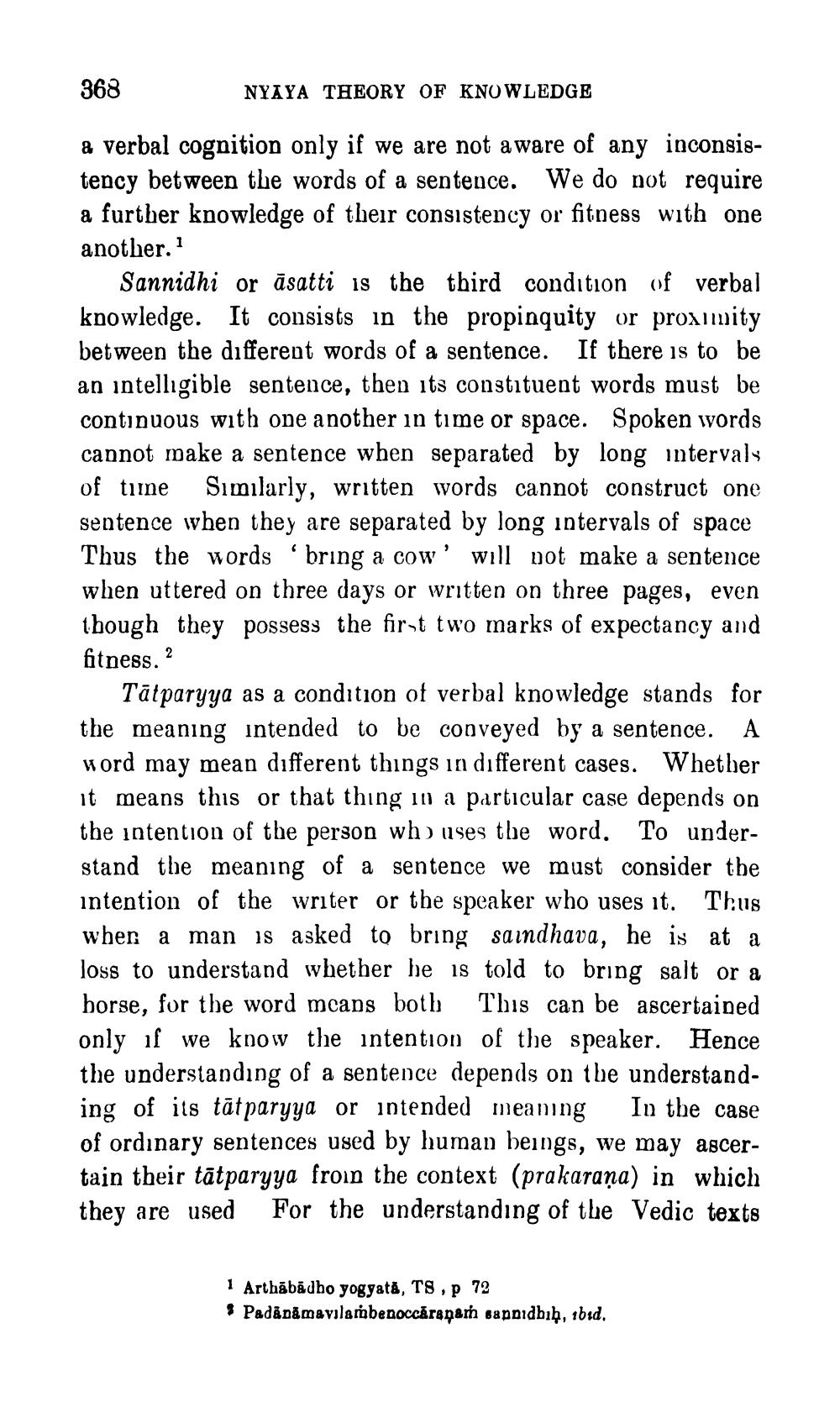________________
368
NYAYA THEORY OF KNOWLEDGE
& verbal cognition only if we are not aware of any inconsistency between the words of a sentence. We do not require a further knowledge of their consistency or fitness with one another. 1
Sannidhi or āsatti is the third condition of verbal knowledge. It consists in the propinquity or proximity between the different words of a sentence. If there is to be an intelligible sentence, then its constituent words must be continuous with one another in time or space. Spoken words cannot make a sentence when separated by long intervals of time Similarly, written words cannot construct one sentence when they are separated by long intervals of space Thus the words 'bring a cow' will not make a sentence when uttered on three days or written on three pages, even though they possess the first two marks of expectancy and fitness.?
Tātparyya as a condition of verbal knowledge stands for the meaning intended to be conveyed by a sentence. A word may mean different things in different cases. Whether it means this or that thing in a particular case depends on the intention of the person who uses the word. To understand the meaning of a sentence we must consider the intention of the writer or the speaker who uses it. Thus when a man is asked to bring saindhava, he is at a loss to understand whether he is told to bring salt or a borse, for the word means both This can be ascertained only if we know the intention of the speaker. Hence the understanding of a sentence depends on the understanding of its tātparyya or intended meaning In the case of ordinary sentences used by human beings, we may ascertain their tātparyya froin the context (prakaraņa) in which they are used for the understanding of the Vedic texts
1 Arthābādbo yogyată, T8, p 72 % Padânāmavilarubenoccåranamh sappidbih, bid,




